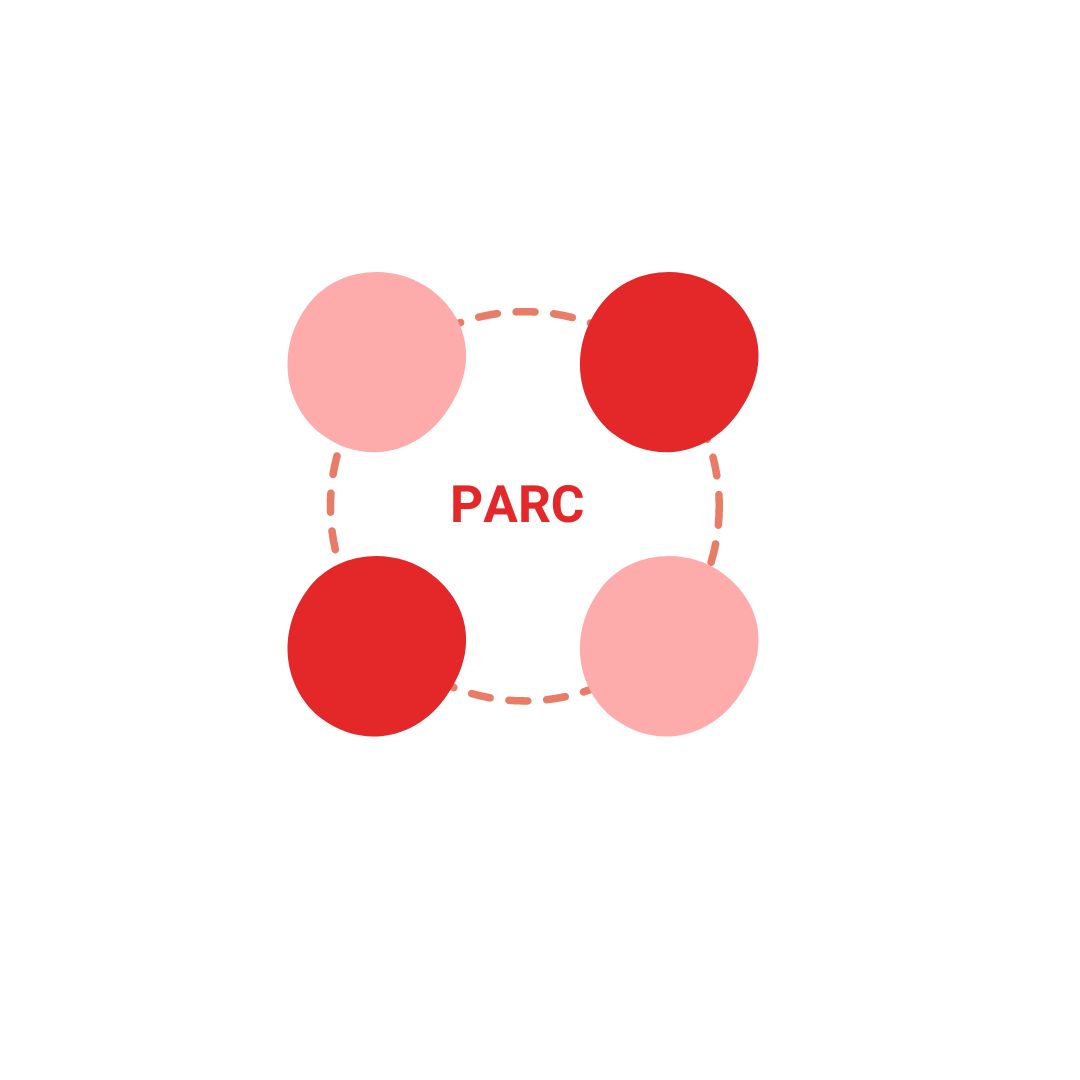Remarketing refers to connecting with visitors to your website or mobile app who have engaged in some kind of interaction. It enables you to strategically place ads in front of these past visitors as and when they browse Google as well as its partner websites. This, in turn, allows you to increase awareness about your brand or remind them to make purchases.
When a person visits your website or mobile app, a special cookie identifies him or her. This allows you to place ads in front of the visitor when he or she is online. This also means that you are getting one more chance to convert him or her into a customer.
For instance, people looking to buy new pet accessories might visit a website or mobile app to find out what products are being offered. However, many visitors often leave without buying anything. All visitors who interact with your site get tagged as “site visitors”. This allows the website to deliver ads to all “site visitors”. The site owner can segment the visitors into groups on the basis of the pages visited by them and show them relevant ads to encourage them to revisit your site.
Why Remarketing is Important
Remarketing is important for various reasons. Companies use the remarketing strategy to exponentially increase their sales. The top four reasons why companies employ this strategy are:
1. Enhancing engagement with their audience
A QuickSprout.com study shows that 97 percent of visitors leave a website or app without buying anything. This also means that these visitors do not leave their email IDs, phone numbers, or contact details. Furthermore, 49 percent of site visitors go through a site two to four times prior to making a purchase.
Most visitors spend time understanding the features of a product and comparing it with other similar products on different platforms. However, businesses looking to meet customer expectations and drive sales cannot afford to allow potential customers to leave their site just like that.
The remarketing strategy allows such businesses to keep track of the online activity of past visitors to their sites, engage with them, and promote products and services. Engagement enables businesses to gain insight into their audience’s needs and remarket products and services accordingly.
2. Improving brand awareness
Surveys show that approximately 42 percent of businesses employ the remarketing strategy for the purpose of improving awareness and recognition of their brands. Top companies want their customers to quickly recognize their brands, as this is considered a key result area.
Remarketing allows companies to re-establish awareness about their brands. Let’s consider one small example. Imagine that you searched for a jacket on a website, found one that you liked, added it to the shopping cart, and then decided to leave the website without purchasing it. In such a situation, the website’s goal is to retarget you via an ad as and when you go online to browse and engage in social media activity. The website could even send an email to you. Thus, remarketing allows the website to reinforce the product and brand in your mind.
3. Increasing conversions
According to experts, only 56 percent of businesses employ the remarketing strategy for the purpose of gaining specific customers, even though it enhances their chances of driving past visitors to their site by placing ads on different media. Furthermore, remarketing ads allow online businesses to offer deals and attract past visitors to visit their website once again and complete the deals. The number of times your audience views your website is very important. This is because customers view the same product multiple times before going ahead with the purchase.
4. Attracting competitors’ customers
Approximately 11 percent of businesses make use of the remarketing strategy to target the customers of their competitors. The remarketing strategy helps you place ads on your audience’s browser once they visit your site or search using a specific keyword. Therefore, the audience could include your competitors’ customers.
1: Website Visitors List
Remarketing is a strategy employed by businesses as part of their display, shopping, and search campaigns to target users who have visited their websites in the past with relevant ads. To put your remarketing strategy into action, the first step is to establish an audience in Google Ads. You can do this by using either the All Visitors or All Users lists from Google Ads or Analytics, respectively. Furthermore, you can segment your website visitor list based on factors such as:
- Web pages visited
- Category pages visited
- Form not filled
- Products not purchased
- Checkouts & more
When creating a list of visitors to your site, it may generally be sufficient to use Google Ads alone. However, you will have to use Google Analytics if you want to create a more targeted and specialized remarketing list in some specific situations.
You can choose other digital advertising platforms such as Facebook Ads, Instagram Ads, and LinkedIn Ads as well. Choose the platform based on who your target audience is and your advertising goals.
If you don’t see any audience, it could be due to the absence of a remarketing tag on your site or Google disallowing remarketing in your industry. A remarketing tag is nothing but a code snippet added to your web pages. It allows the ad platforms to keep track of the visitors to your website and include them in your remarketing list.
Steps to Create an “All Users” List from Google Ads
- Log into the Google Ads account
- Click on “Tools & Settings”
- Click on “Audience Manager” under the “Setup” section
- Click on the blue “+”
- Choose “Google Ads”
- Choose the audience type “All Users”
2: “Add to Cart Drop-Offs” List
The “Add to Cart Drop-Offs” list can also be obtained from Google Ads. They are users who did not complete the checkout procedure after visiting your website and adding items to the cart. They are also users who have shown a keen interest in the products you offer. However, for some reason, they didn’t complete the purchase.
Creating the “Add to Cart Drop-Offs” remarketing list helps you target these visitors via customized ads and encourages them to return to your site and complete the checkout process. Such a campaign can be very effective as users who are interested in your products are targeted. They are more likely to buy than new visitors.
To create the “Add-to-Cart-Drop-Offs” list:
- Use the option “Visitors to a specific page who did not go to another page” under “Audience Manager”
- Enter cart page URLs in the first field
- Exclude the thank you page
3: Converted User List
The “converted users list” is a list of all the users who have completed the action you desired on your website. It may include completing a form or making a purchase. As these users are already converted, they cannot be expected to convert for the same actions.
However, creating a remarketing list of “converted users” is important because you can run a campaign and encourage them to revisit your site and take more action, including buying another product or registering for your newsletter. Such a remarketing campaign helps you build customer loyalty and lifetime value.
The “Converted Users List” is a valuable tool that helps you enjoy repeat business and increase customer retention.
To create a “Converted Users List” in Google Ads:
- Use the option “Page visitors who visited another page” in “Audience Manager”
- Enter the thank-you page URL
4: Customer List
In remarketing, a “Customer List” is an audience list that you can generate in Google Ads and that enables you to send customized ads to your existing customers. Typically, you create this list by uploading your customers’ email addresses and other contact information to Google Ads. After uploading the information, you can use the data to create the remarketing audience list.
The advantage of generating a “Customer List” is that you can target already converted users with relevant and customized ads to encourage repeat business and increase customer loyalty. For example, you can run an ad campaign to promote a different product or service that you believe will be beneficial to them.
To generate the “Customer List” via Google Ads:
- Collect email addresses and other information about existing customers
- Upload the information to Google Ads in CSV or TXT format
- Create the customer list for remarketing purposes
5: Catalogue List
In remarketing, the “Catalogue List” refers to users who interacted with the product catalogue on your site. The “Catalogue List” is generated by tracking visitors who viewed, added products to the cart, or bought products via your catalogue.
After creating the catalogue list, you may run a remarketing campaign to target visitors who have looked at your product catalogue in the past. For instance, you can promote related products or extend discount offers on products previously viewed but not purchased by the visitor.
The advantage of using this list for remarketing is that you can target visitors who have expressed interest in what you have to offer. Therefore, the chances of converting them again for other products or services are higher compared to new visitors who have not had any interaction with your brand.
To create the “Catalogue List” via Google Ads:
- Establish product feeds that consist of relevant product information (product IDs, names, images, descriptions, and prices)
- Track the interactions of visitors with these products (views, purchases, and adding to carts)
- Use the data to generate the audience list
6: Video Remarketing List
The “Video Viewed List” that you can obtain from Google Ads consists of visitors who viewed the video content that you have provided on your website. This list is generated by tracking visitors who viewed at least a part of the video content. The list could be segmented based on viewed videos, subscribers, users who have comments, liked and shared
After generating the “Video Viewed List”, you can run an ad campaign to promote related video content, offer a special discount, or encourage users to take a specific action. The benefit of generating and using this list is that you can remarket your products or services to visitors who have expressed some interest in your videos. They are more likely to convert than new visitors who come to your site.
To create the “Video Remarketing List”:
- Track visitor interactions with video content on your site using tools like Google Analytics or Tag Manager
- Create a segmented list based on viewed videos and engaged users
7: Instagram List
An Instagram remarketing list consists of people who interacted with your account or content. The interactions may include liking your posts, commenting, viewing your stories, and/or following your account.
After creating an Instagram list, you may run a remarketing ad campaign to promote a specific product or service, offer a special discount, or encourage users to visit your site and take a specific action.
The advantage of using the Instagram list is that you can target users who have expressed some liking for your brand or products. The chance that they can be converted into your customers is higher compared to those that have not interacted with your brand at all.
Steps to Create an Instagram List
- Open Facebook’s “Ads Manager”
- Go to the “Audiences” section.
- Choose “Create Audience”
- Select “Custom Audience.
- Choose the source “Engagement”
- Select “Instagram Business Profile”
- Choose the engagement type you want to focus on:
- Visitors who started following your account
- Visitors who engaged with your account
- Visitors who viewed your profile
- Visitors who engaged with a post or ad
- Visitors who sent a message to your account
- Choose the engagement period
- Give a name to your target audience’s list
- Click on “Create Audience”
8: Lead Forms
A lead form remarketing list consists of the names of visitors who engaged in some kind of interaction with one of the lead forms on your site. Information about visitors opening or filling out lead forms on your website can be captured and included in this remarketing list.
Since such visitors have had some kind of interaction with your website, it may be easier to retarget these individuals with specifically designed ads and convert them into customers or even drive them down to the next stage in the sales funnel. This remarketing list can help you generate more leads and increase conversions.
To create a lead-form remarketing list:
- Open Ads Manager
- Click on “Audiences”
- Click on “Create Audience”
- Choose “Custom Audience”
- Select “Engagement”
- Choose “Lead Form”
- Choose the engagement option:
- All who opened the lead form
- Those who opened but did not submit
- Those who opened and submitted
- Click on “Create Audience.”
9: Facebook Page
If your business has a Facebook page and people are engaging with it in different ways, you can create a custom remarketing list via Facebook Ads Manager. Your audience on the Facebook page of your business includes all those visitors who have liked, commented on, shared, or interacted with your Facebook Page in any other manner.
A Facebook page remarketing list is a powerful tool, as it can help you increase awareness about your brand and generate more conversions. It is more beneficial to show ads to visitors who have expressed some interest in your business by liking, commenting, or sharing content on your Facebook Page rather than to work with brand-new visitors.
For instance, you can make use of the Facebook page remarketing list to display targeted ads to those visitors who have shown some interest in your brand but have not checked out your website or bought a product and convert them into customers.
To create a remarketing list from your Facebook Page:
- Go to the Facebook Ads Manager
- Click on “Audiences”
- Click on “Create Audience”
- Select “Custom Audience.”
- Choose “Engagement” and select “Facebook Page.”
- Choose the engagement type from the following:
- Anyone who visited your page
- Everyone who engaged with your page
- Visitors who currently like or follow your page
- Visitors who engaged with any post or ad
- Visitors who clicked on any call-to-action button
- Visitors who messaged you on your page
- Visitors who saved a post or your page
- Choose the engagement time period (30 days, 90 days, 180 days, 365 days, or a custom date range)
- Click on “Create Audience”
10: Shopping Remarketing List
A shopping remarketing list consists of the names of people who previously visited your eCommerce store or website and showed interest in any of your products or engaged in some kind of interaction. Once the list is ready, you can advertise online by placing relevant ads in front of these visitors when they browse the Internet and encouraging them to revisit your website through offers and purchase whatever products or services they are interested in. You can create shopping remarketing lists using advertising platforms such as Google Ads, Facebook Ads, etc. This is an effective way not only to boost conversions but also to increase sales.
When creating a shopping remarketing list on Google Ads Manager or Facebook Ads Manager, you can segment the visitors as follows:
- Visitors who viewed products
- Visitors who navigated to your site after viewing products
- Visitors who saved products
- Visitors who viewed your shop’s page on Facebook or Instagram
- Visitors who viewed a collection in your Facebook or Instagram shop
- Visitors who added any product to their basket
- Visitors who initiated checkout for any product
11: On Facebook Page Listing
An “On Facebook Page Listing” is a public profile representing an organization, a brand, a business, a celebrity, or any other public figure. Any Facebook user can create a Page. It helps businesses establish their presence and engage with their audience on this social network. Typically, an “On Facebook Page Listing” provides the following information:
- Page name
- Profile picture
- Cover photo
- Bio
- Website link
- Other details about a business or an organization
Owners of the Page can post content (text, photos, links, and videos) and engage with their audience. For businesses, “On Facebook Page Listing” is an effective tool for engaging with the target audience, promoting products and services, and building brand awareness. In addition, businesses can use the analytics tools provided by Facebook to measure the performance of campaigns and content and adjust their strategies as required.
Steps to Create a Facebook Page Listing Remarketing List
- Establish a Facebook Business Manager account
- Install Facebook Pixel on your website
- Go to “Audiences”
- Click on “Create Audience”
- Choose “Custom Audience”
- Choose “Website Traffic” as the source
- Choose the criteria:
- Visitors who viewed products in your catalogue
- Visitors who messaged about products in your catalogue
- Name your audience and create your Facebook Page Listing Remarketing List.
Conclusion
It’s important to have a remarketing strategy to drive engagement and conversions, this should depend on the channels which you are using to connect with your audiences. The most important factor after setting up the remarketing lists and campaigns, is to communication which connect with the audiences in the remarketing journey, the communication should be inline with the way they have interacted with their business, it should be personalised.







